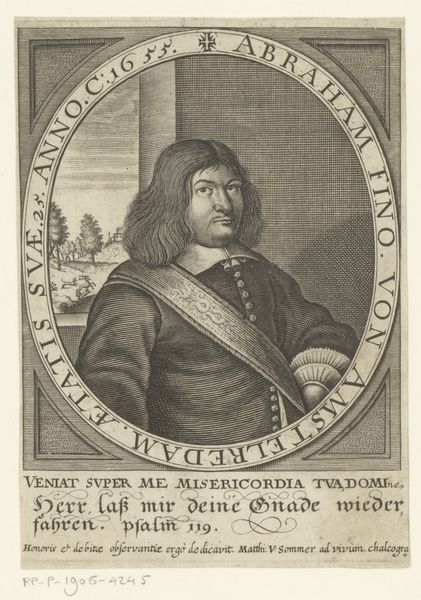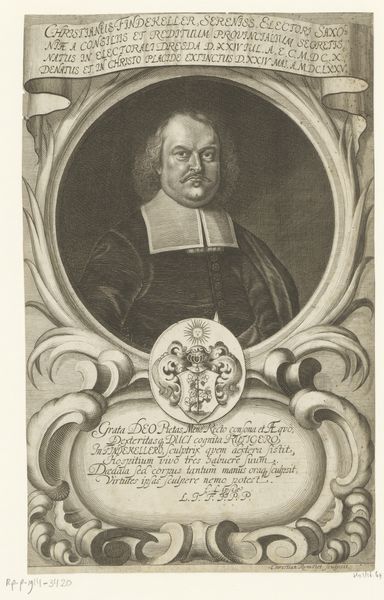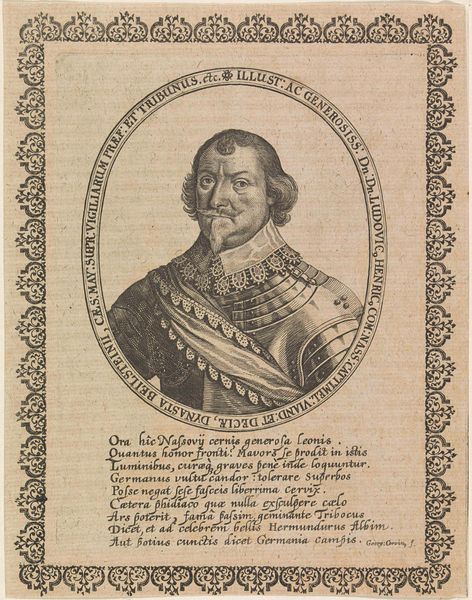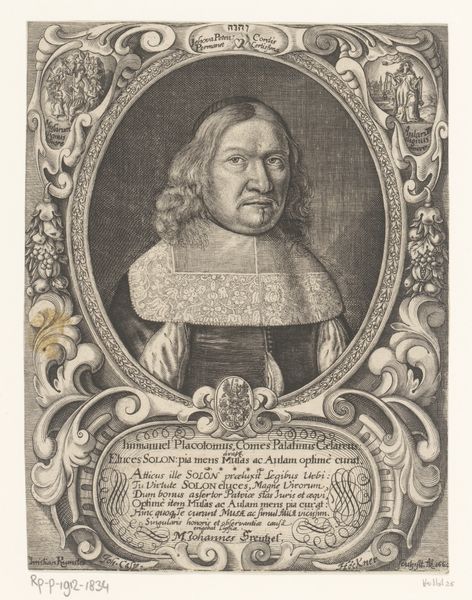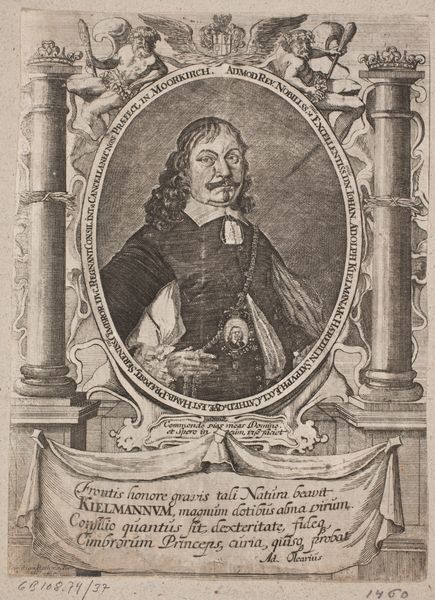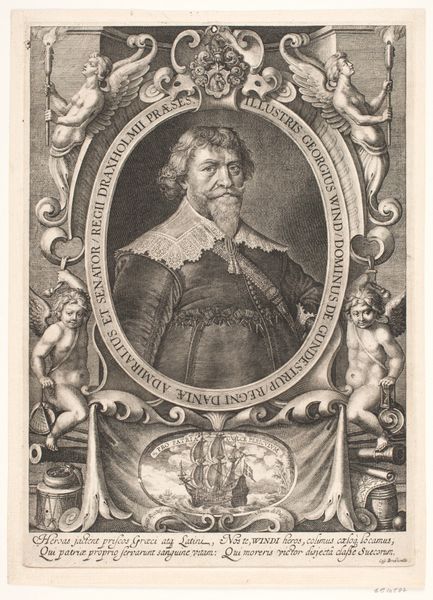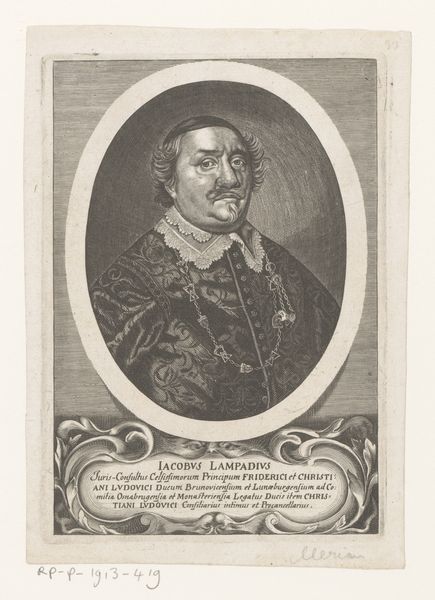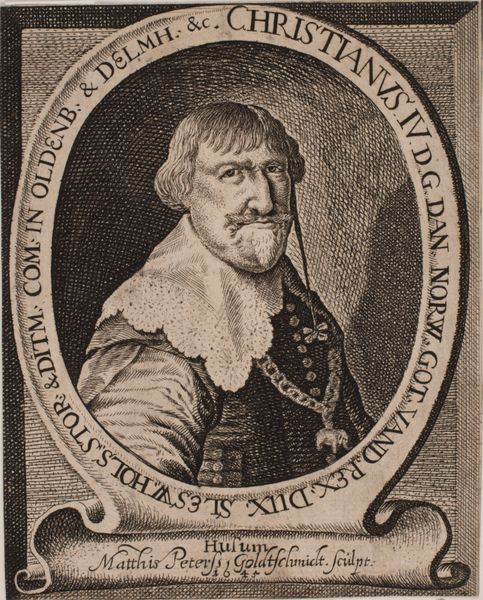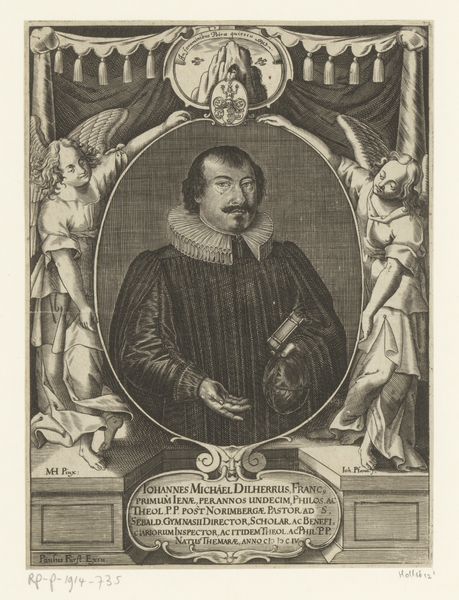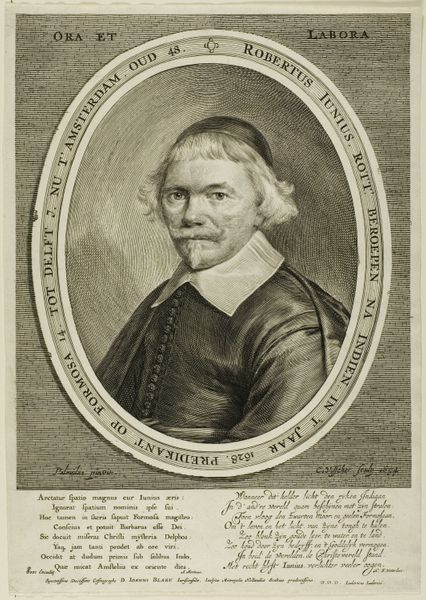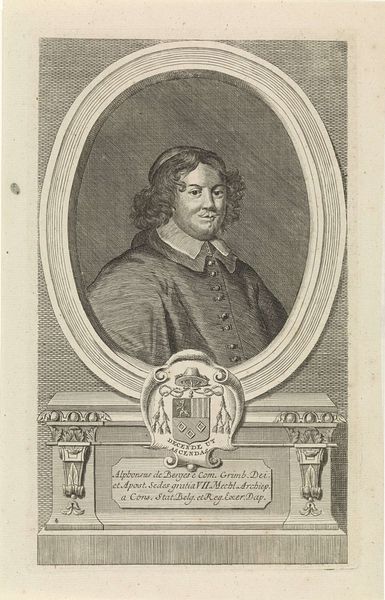
print, engraving
#
baroque
# print
#
old engraving style
#
engraving
Dimensions: 224 mm (height) x 150 mm (width) (bladmaal)
Curator: The print before us, titled "Johann Adam von Kielmannseck," created in 1651 by Christian Rothgiesser, presents a powerful portrait of a prominent figure of its time. It's a masterfully executed engraving that seems to hold within it not just the image of a man, but a snapshot of the societal structures that shaped his life and times. Editor: Absolutely. I’m immediately struck by how this print embodies authority – both through the sitter’s imposing figure and the elaborate ornamentation of the Baroque style. As an engraving, how might this artwork have been seen or used at the time it was produced? Curator: That’s a crucial question. Prints like these weren't just art objects, but powerful tools in the early modern period. Consider that engravings allowed for wider dissemination than painting did, meaning this portrait served to solidify and amplify Kielmannseck's position. Editor: In what way exactly? Was this some form of political propaganda? Curator: Possibly. This portrait's presence – its display in public spaces or its circulation amongst certain societal circles – bolstered the image of Kielmannseck as an authority figure. Look at the Latin inscription, the intricate frame; everything serves to reinforce his status. What this piece truly signifies depends on who had access to it and in what context it was being displayed. Editor: So, rather than existing solely as a work of art, the print actively participated in constructing and reinforcing power dynamics of the era? Curator: Precisely. Its role goes beyond simple aesthetics. How it was viewed, who had access to it, and how its imagery functioned within the broader socio-political sphere is where its real impact lies. These considerations alter its meaning drastically. Editor: That is a really compelling perspective; thinking of art as something involved in shaping society gives a whole new perspective to its function in society. Curator: Indeed, and by understanding this aspect of artworks, it will help you interpret how our contemporary art museums impact today’s culture.
Comments
No comments
Be the first to comment and join the conversation on the ultimate creative platform.

